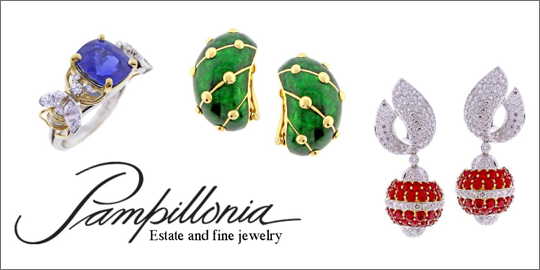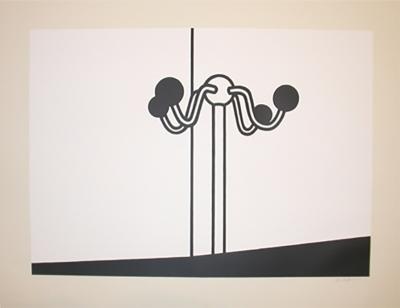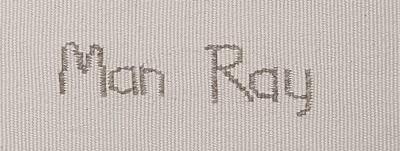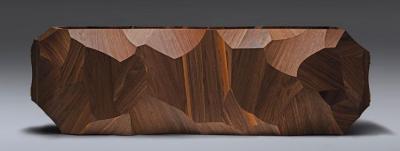Artist Cornelia Thomsen Transforms Mathematical Ratios into Dazzling Artworks
_hi-e.jpg) |
Golden Ratio Series, 2023 in Counterpoint at Cristea Roberts Gallery, 2024. © Cristea Roberts Gallery, London, 2025. Photo: Sam Roberts Photography |
Artist Cornelia Thomsen Transforms Mathematical Ratios into Dazzling Artworks
by Ben Genocchio
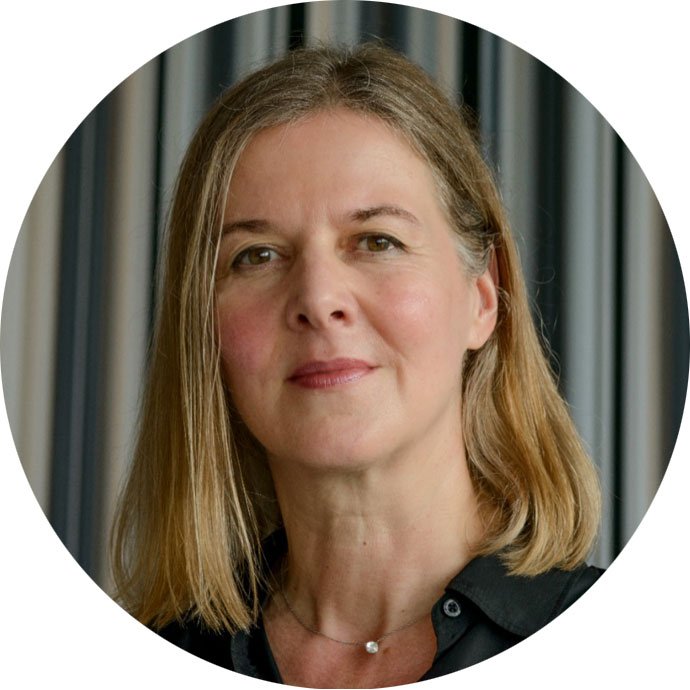 | |
Cornelia Thomsen |
Cornelia Thomsen, 54, is a painter of luminously minimal, geometric abstractions that dazzle the eyes. She began making aquatint prints with master printmaker Greg Burnet only two years ago, though she had worked before in printmaking. The response to these new prints was uniformly positive, followed by a wave of acquisitions. Buyers included collectors, interior designers and architects like Peter Marino, as well as Citibank corporate collection and several museums: the Museum of Fine Arts in Houston purchased a set of 8 prints of her Golden Ratio Series, while The Parrish Art Museum in Watermill, New York purchased a set of 8 prints of her Silver Ratio Series.
 |
Cornelia Thomsen, Double Golden Triangle Series, 2025. Aquatint on Hahnemühle paper, edition of 12. Paper size: 36½ x 27 inches; plate size: 27½ x 18 inches. |
Thomsen has 4 series of aquatint prints made in collaboration with Burnet. All are based on mathematical ratios: The Golden Ratio, the Silver Ratio, and most recently the Golden Triangle and the Double Golden Triangle. “The shapes are based on a series of mathematical ratios developed by the ancient Greeks which, though not so well known today, underpin much of our culture and everything in nature,” Thomsen explains. “I was fascinated by this order or basic knowledge that we all share in everything from our DNA to the architecture of Notre-Dame.”
 |
Cornelia Thomsen, Silver Ratio Series, 2024. Aquatint on Hahnemühle paper, edition of 12. Paper size: 23 x 26 inches; plate size: 15 x 18 inches. |
Thomsen had used these ratios in her paintings for over a decade but they were hidden within the substructure. She met Burnet about 2021 and after several fruitful meetings they decided to print her minimal, geometric representations of the Golden Ratio as aquatints, a soft, velvety printing technique that creates a feathery printed image that looks like a drawing. She chose to print the designs in primary and complementary colors which are universally pleasing. The simplicity of these shapes combined with the deep richness of printed, saturated primary colors was instantly striking.
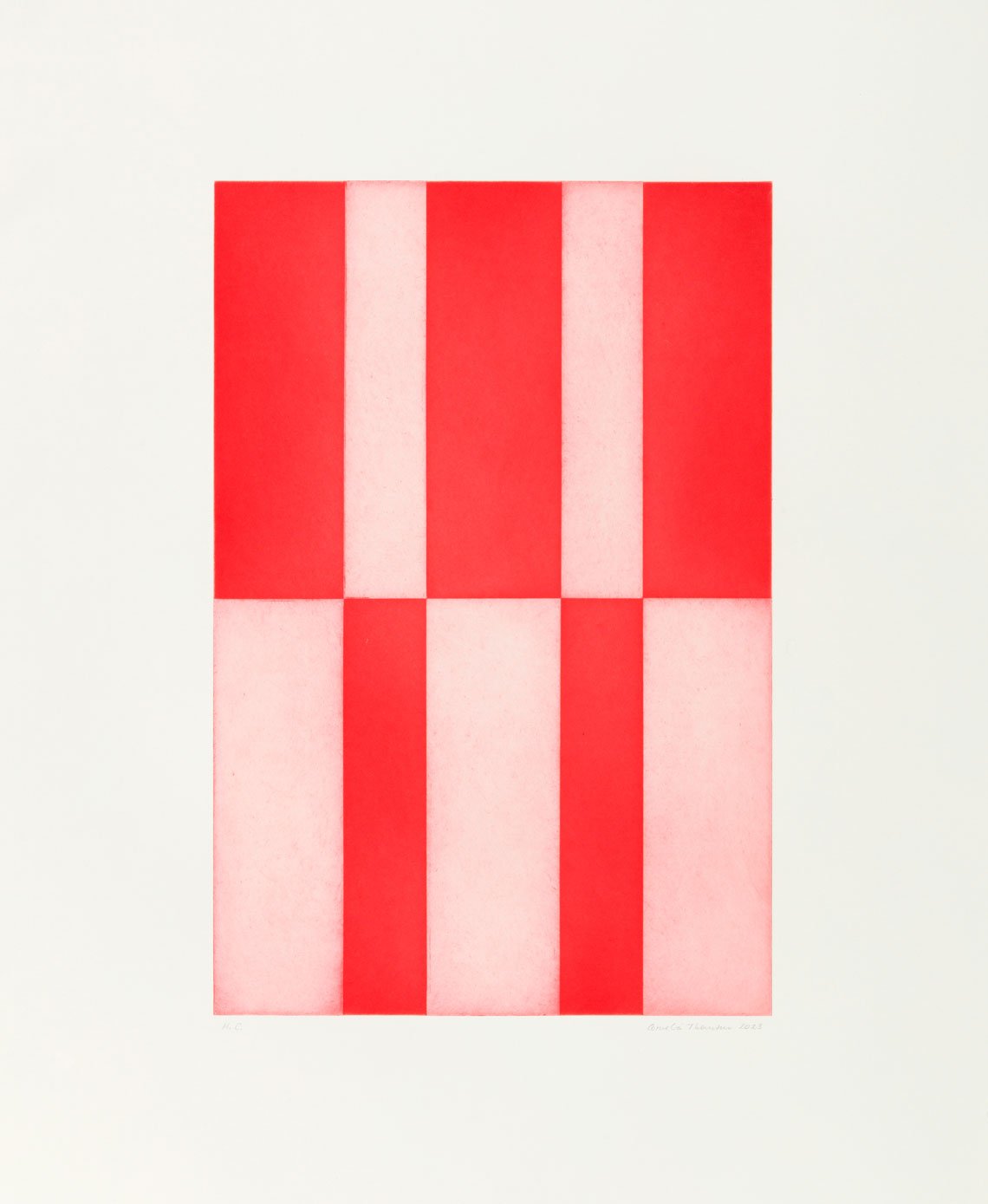 | 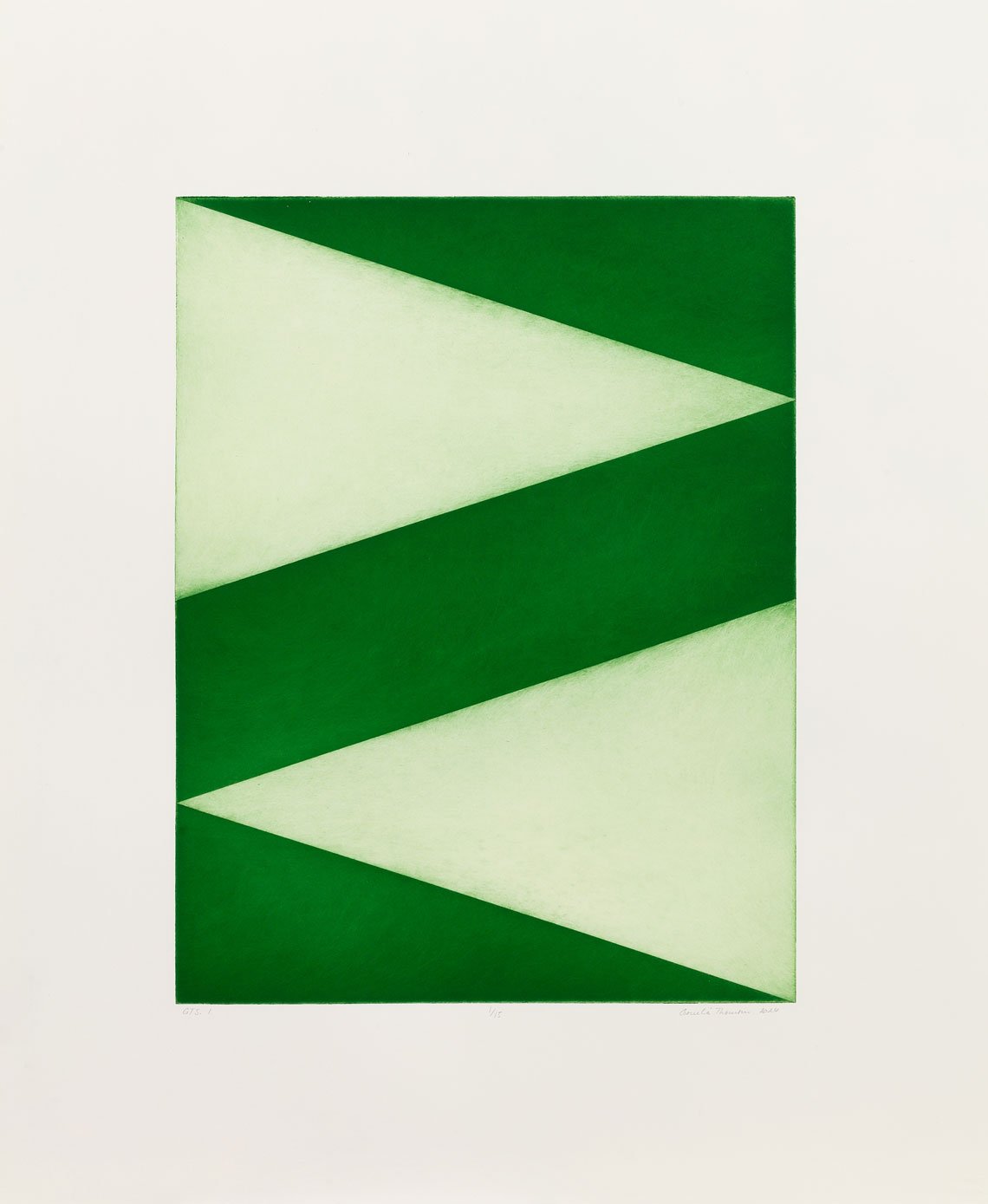 | |
Left: Cornelia Thomsen, Golden Ratio Series, 2023. Aquatint on Hahnemühle paper, edition of 12. Paper size: 27½ x 21½ inches; plate size 18 x 12 inches. Right: Cornelia Thomsen, Golden Triangle Series, 2024. Aquatint on Hahnemühle paper, edition of 15. Paper size: 27 x 22¾ inches; plate size 18 x 13¾ inches. | ||
“I always had an idea of what I wanted to do, what I wanted the forms to look like, but it wasn’t until I saw the first aquatint with its richness and intensity of color that I realized this was what I had been searching for all along,” Thomsen says. “The shapes just seemed to hover there on the paper as if they were floating in space.” The process had taken her close to eight years to develop and she gives a lot of the credit for the breakthrough to Burnet, a gifted Australian printmaker with 30 years experience producing prints for major artists including Sean Scully, George Condo, John Currin, Simone Leigh, Will Cotton, Kara Walker, Ghada Amer and Richard Tuttle.
“It's a pleasure working with Cornelia Thomsen,” says Burnet, “because as an artist she has a clear idea of the conceptual aspects of her work, and what she visually wants from it. As a printmaker, this is refreshing as it leaves me free to concentrate and suggest some of the more technical aspects of etching and so we both can participate fully in the collaborative process.”
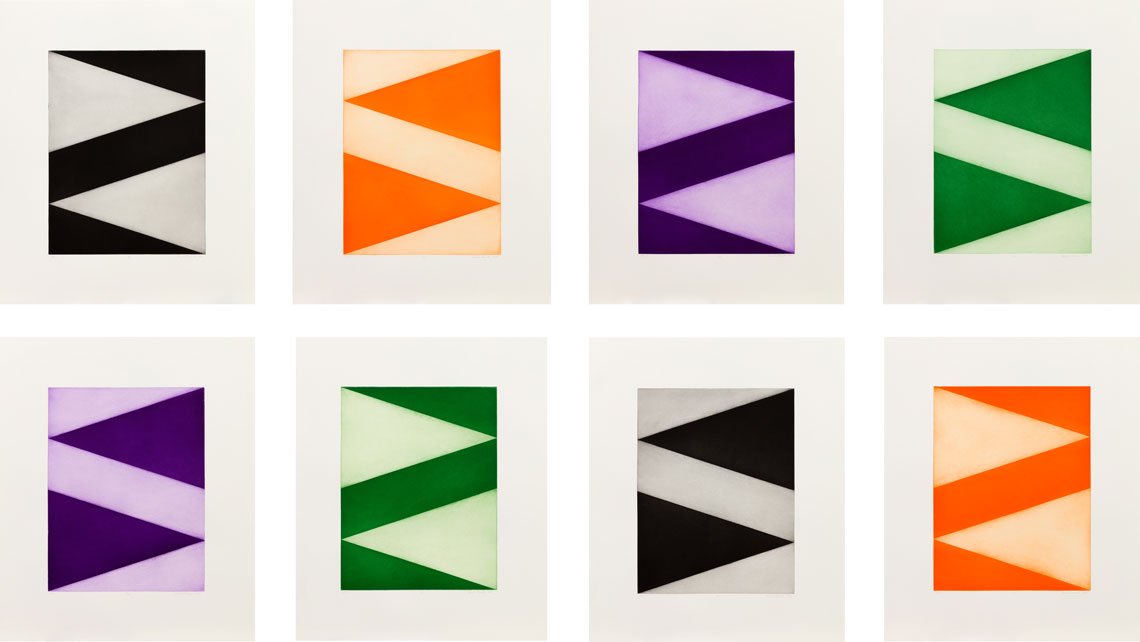 |
Cornelia Thomsen, Golden Triangle Series, 2024. Aquatint on Hahnemühle paper, edition of 15. Paper size: 27 x 22¾ inches; plate size 18 x 13¾ inches. |
There are 8 prints per edition, with the edition sizes ranging from 12 to 15. “The prints correspond with each other when hung together,” the artist explains. “They gain by being shown together but also work as singles, pairs, or sets of 4. What happens when you put them together is they have a profound visual impact. They communicate with each other, and you can start to see the relationships between them.”
Thomsen’s artwork has always had a lot to do with architecture and design, specifically the Bauhaus School and its modernist philosophy of rational aesthetics. Geometry is the basis of her ordered, optical paintings made up of hundreds of parallel lines in different thicknesses and colors. The artist grew up near Weimar, Germany, the home of the Bauhaus School from 1919 to 1925 before its move to nearby Dessau. She was a devotee of Bauhaus aesthetics and ideas as an art student in Frankfurt, where she received both her B.A. and M.F.A. degrees from the University of Art and Design in Offenbach.
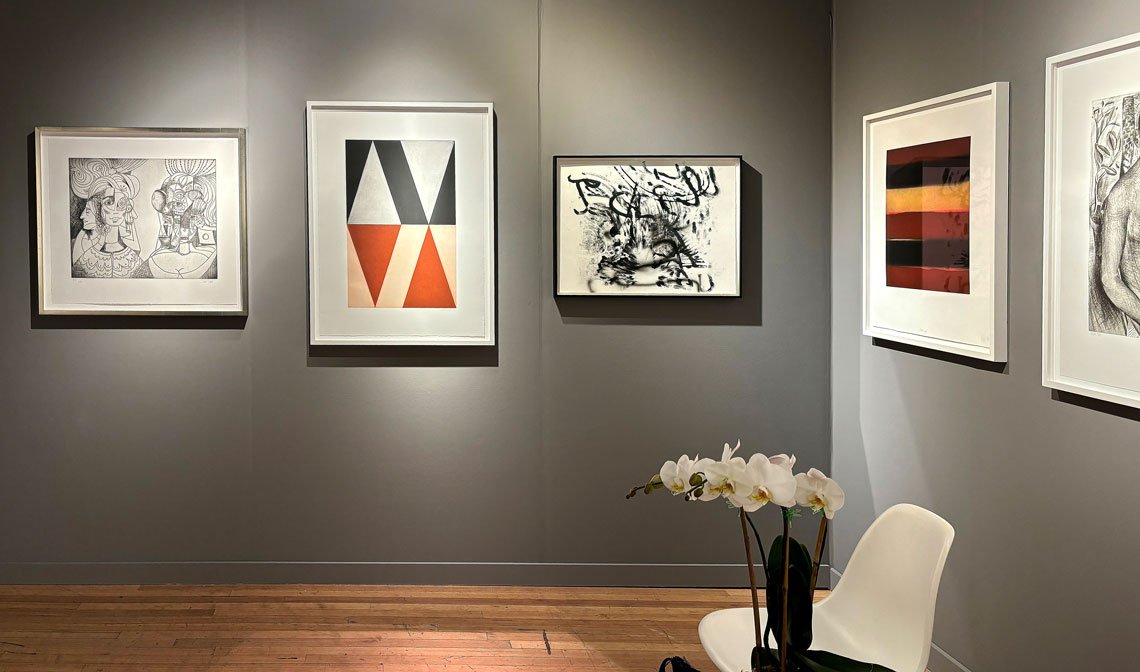 |
Seen second from left, Cornelia Thomsen’s Double Golden Triangle Series, 2025, joins works by George Condo, Julie Mehretu and Sean Scully at Burnet Editions booth at the IFPDA Print Fair. Photo: Greg Burnet |
Thomsen traces her interest in abstract shapes and forms to her childhood. She was born in Rudolstadt in the German Democratic Republic, where in 1840 Friedrich Fröbel pioneered the concept of the world’s first kindergarten (a German word), as a play-based and nurturing environment for children that encouraged them to see and understand the world initially in terms of abstract shapes and primary colors. Cornelia’s mother was a kindergarten teacher and she grew up in a home steeped in Froebel’s philosophy. Froebel’s influence was far-reaching; Frank Lloyd Wright played with a set of Froebel’s blocks as a child and credits that early experience as having had a lasting impact on his understanding of volume, shape and form, sparking his interest in architecture and building.
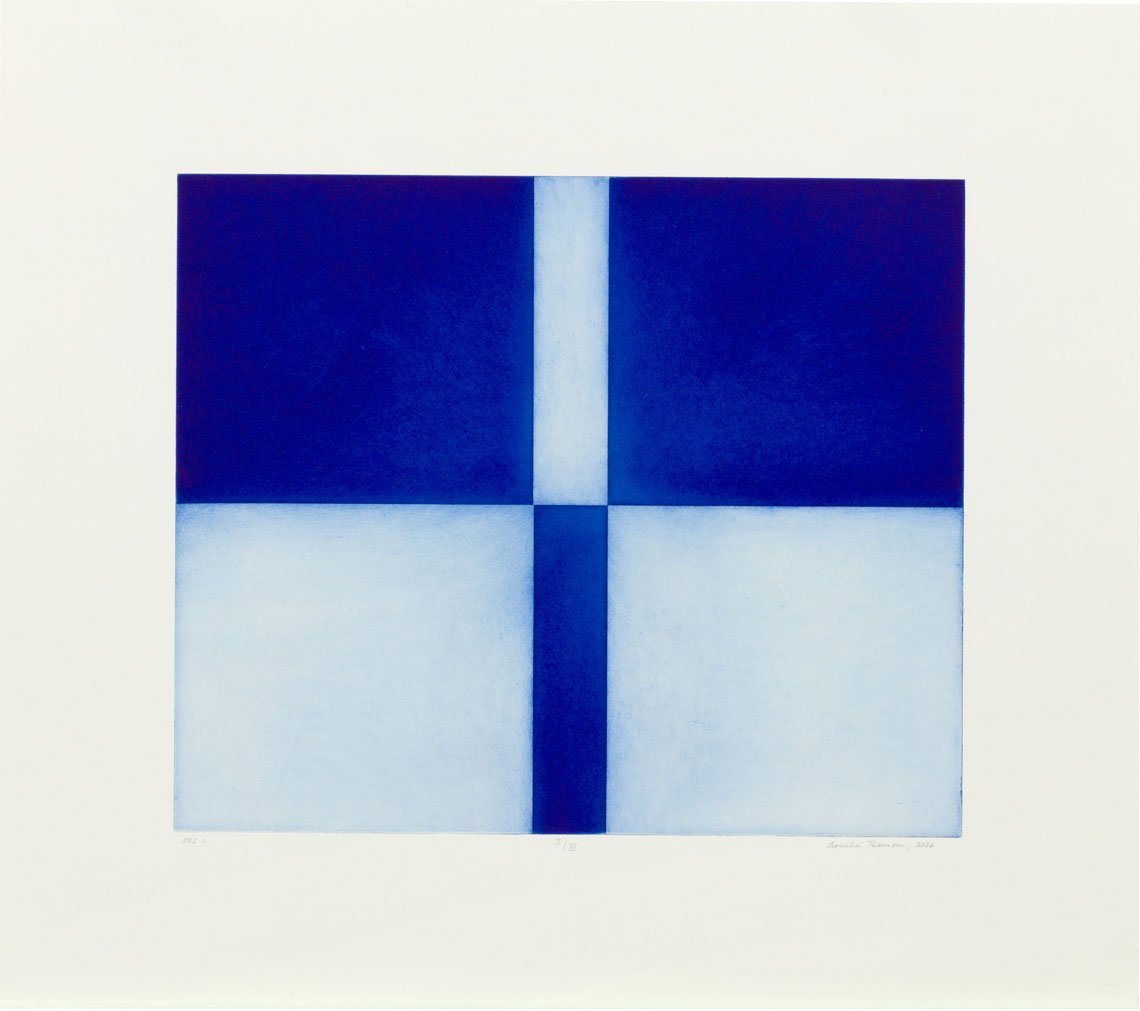 |
Cornelia Thomsen, Silver Ratio Series, 2024. Aquatint on Hahnemühle paper, edition of 12. Paper size: 23 x 26 inches; plate size 15 x 18 inches. |
Thomsen is continuing to explore the possibilities of abstraction as a universal visual language in her new series of prints. She is experimenting with other Greek mathematical formulas and has started to produce larger versions of the original prints (this time with 4 prints per edition), a development that she believes further enhances their message and appeal. “The larger ones are dominant, with a greater mass and intensity of color,“ she says. “When you double the scale, the form is much more present, a bold and clear statement. The shapes also begin to take on a three-dimensional and almost sculptural quality.”
But nothing comes easily. “I have to work myself into these ratios,” the artist explains, “to study and experiment visually and to see how I respond to them as an artist.” She loves that people have embraced her prints and want to collect them, but that is not what drives her to make art. “I love inventing things,” she says, “there is satisfaction in creating and communicating through my ideas with others. That is what I’m aiming for.”









